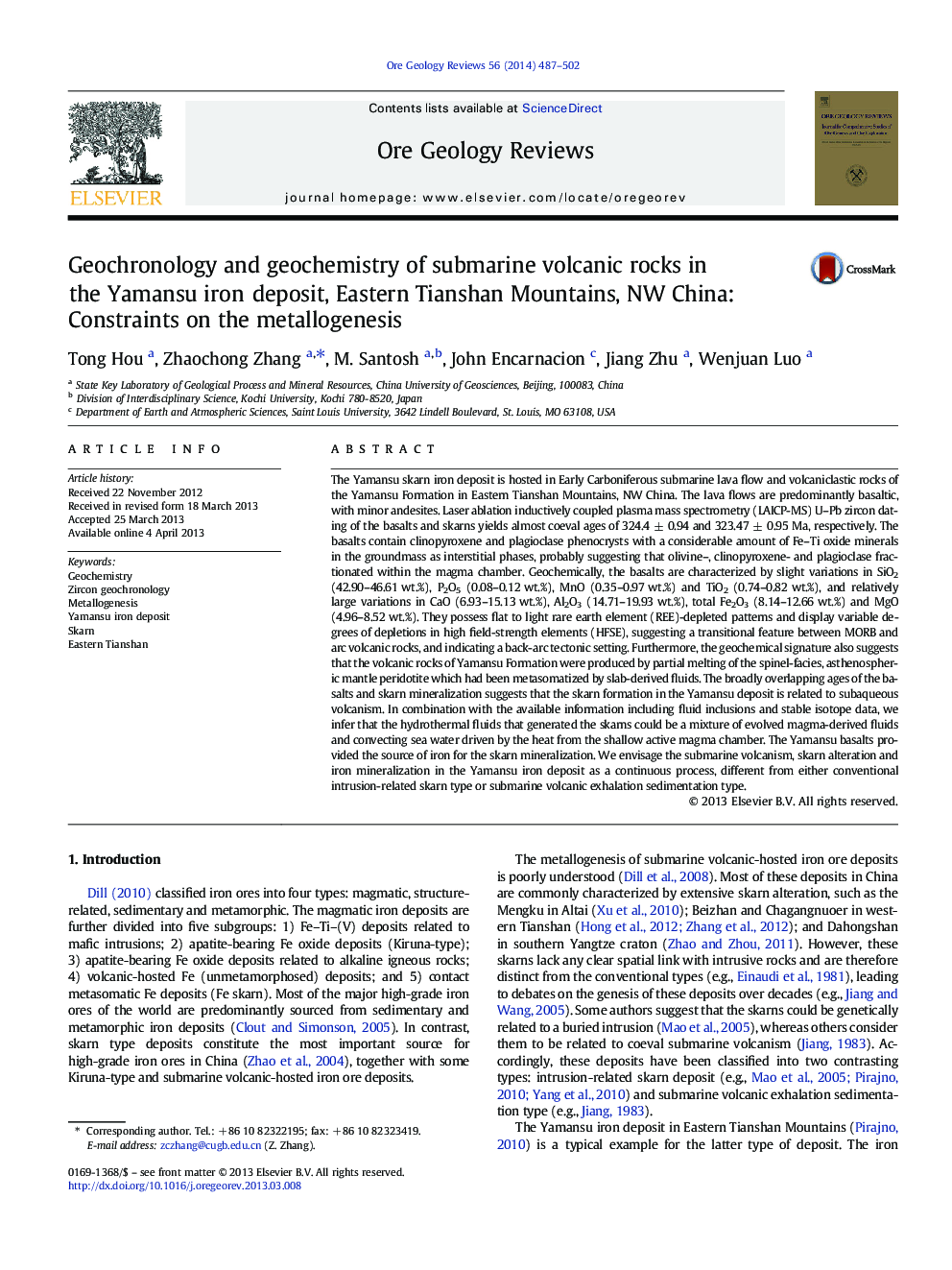| کد مقاله | کد نشریه | سال انتشار | مقاله انگلیسی | نسخه تمام متن |
|---|---|---|---|---|
| 4697448 | 1637247 | 2014 | 16 صفحه PDF | دانلود رایگان |

• The volcanic rocks and skarns are broadly coeval.
• Geochemically transitional feature between MORB and IAB.
• The skarns were formed by interaction between fluids and submarine rocks.
• The fluids were derived from active magma chamber with the involvement of seawater.
The Yamansu skarn iron deposit is hosted in Early Carboniferous submarine lava flow and volcaniclastic rocks of the Yamansu Formation in Eastern Tianshan Mountains, NW China. The lava flows are predominantly basaltic, with minor andesites. Laser ablation inductively coupled plasma mass spectrometry (LAICP-MS) U–Pb zircon dating of the basalts and skarns yields almost coeval ages of 324.4 ± 0.94 and 323.47 ± 0.95 Ma, respectively. The basalts contain clinopyroxene and plagioclase phenocrysts with a considerable amount of Fe–Ti oxide minerals in the groundmass as interstitial phases, probably suggesting that olivine–, clinopyroxene- and plagioclase fractionated within the magma chamber. Geochemically, the basalts are characterized by slight variations in SiO2 (42.90–46.61 wt.%), P2O5 (0.08–0.12 wt.%), MnO (0.35–0.97 wt.%) and TiO2 (0.74–0.82 wt.%), and relatively large variations in CaO (6.93–15.13 wt.%), Al2O3 (14.71–19.93 wt.%), total Fe2O3 (8.14–12.66 wt.%) and MgO (4.96–8.52 wt.%). They possess flat to light rare earth element (REE)-depleted patterns and display variable degrees of depletions in high field-strength elements (HFSE), suggesting a transitional feature between MORB and arc volcanic rocks, and indicating a back-arc tectonic setting. Furthermore, the geochemical signature also suggests that the volcanic rocks of Yamansu Formation were produced by partial melting of the spinel-facies, asthenospheric mantle peridotite which had been metasomatized by slab-derived fluids. The broadly overlapping ages of the basalts and skarn mineralization suggests that the skarn formation in the Yamansu deposit is related to subaqueous volcanism. In combination with the available information including fluid inclusions and stable isotope data, we infer that the hydrothermal fluids that generated the skarns could be a mixture of evolved magma-derived fluids and convecting sea water driven by the heat from the shallow active magma chamber. The Yamansu basalts provided the source of iron for the skarn mineralization. We envisage the submarine volcanism, skarn alteration and iron mineralization in the Yamansu iron deposit as a continuous process, different from either conventional intrusion-related skarn type or submarine volcanic exhalation sedimentation type.
Journal: Ore Geology Reviews - Volume 56, January 2014, Pages 487–502